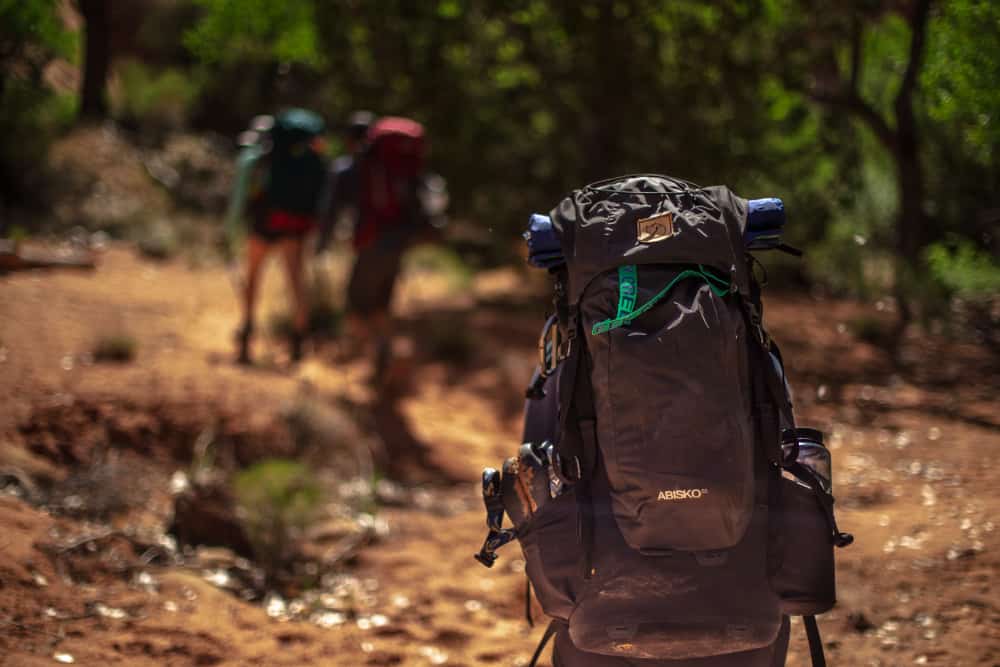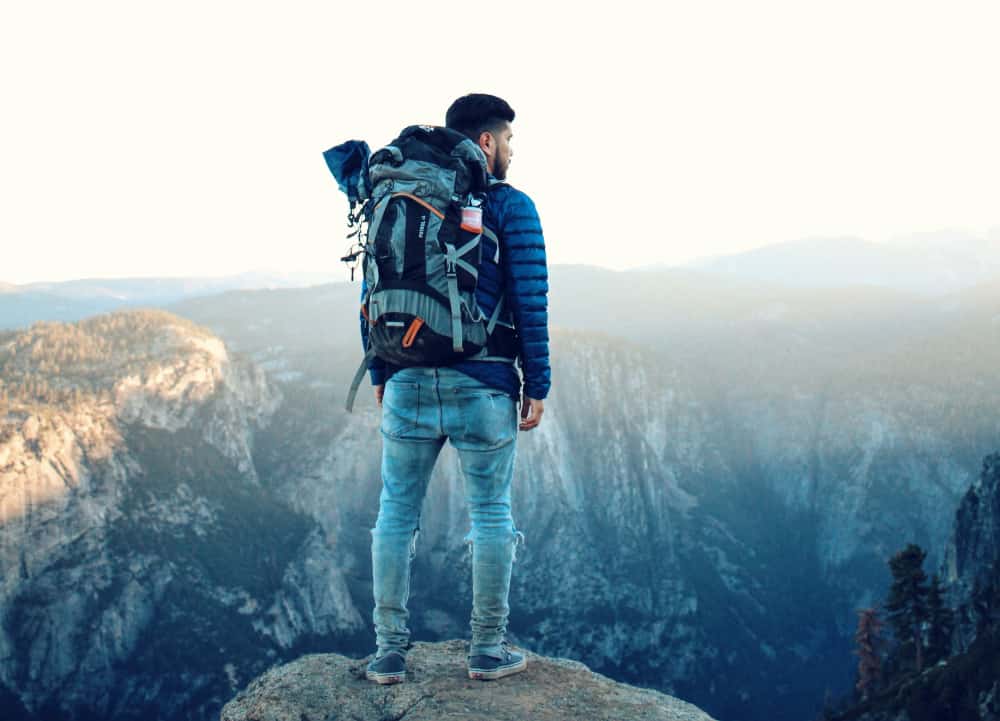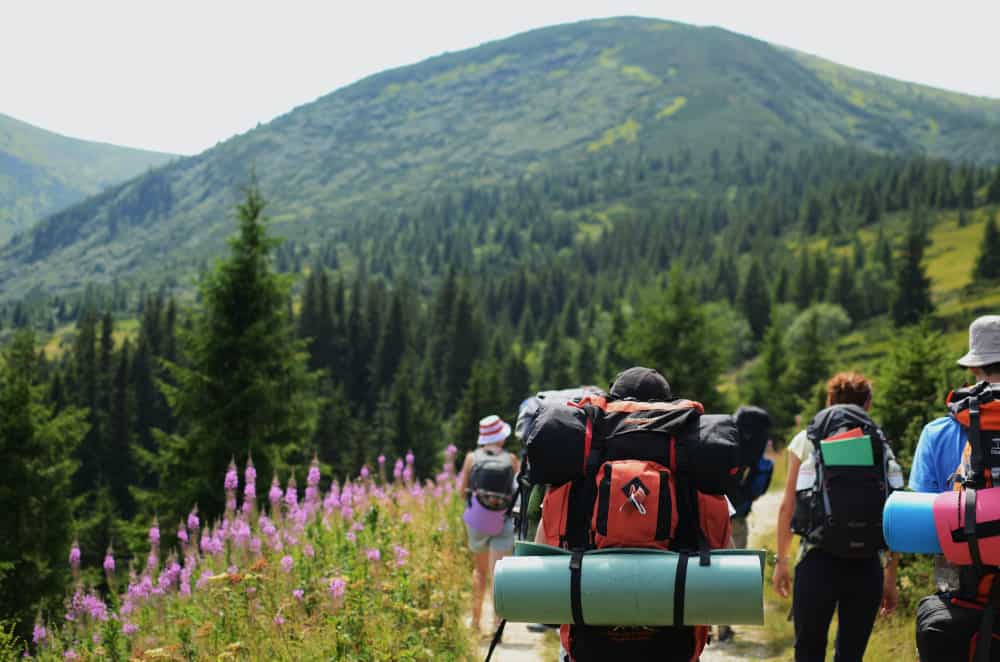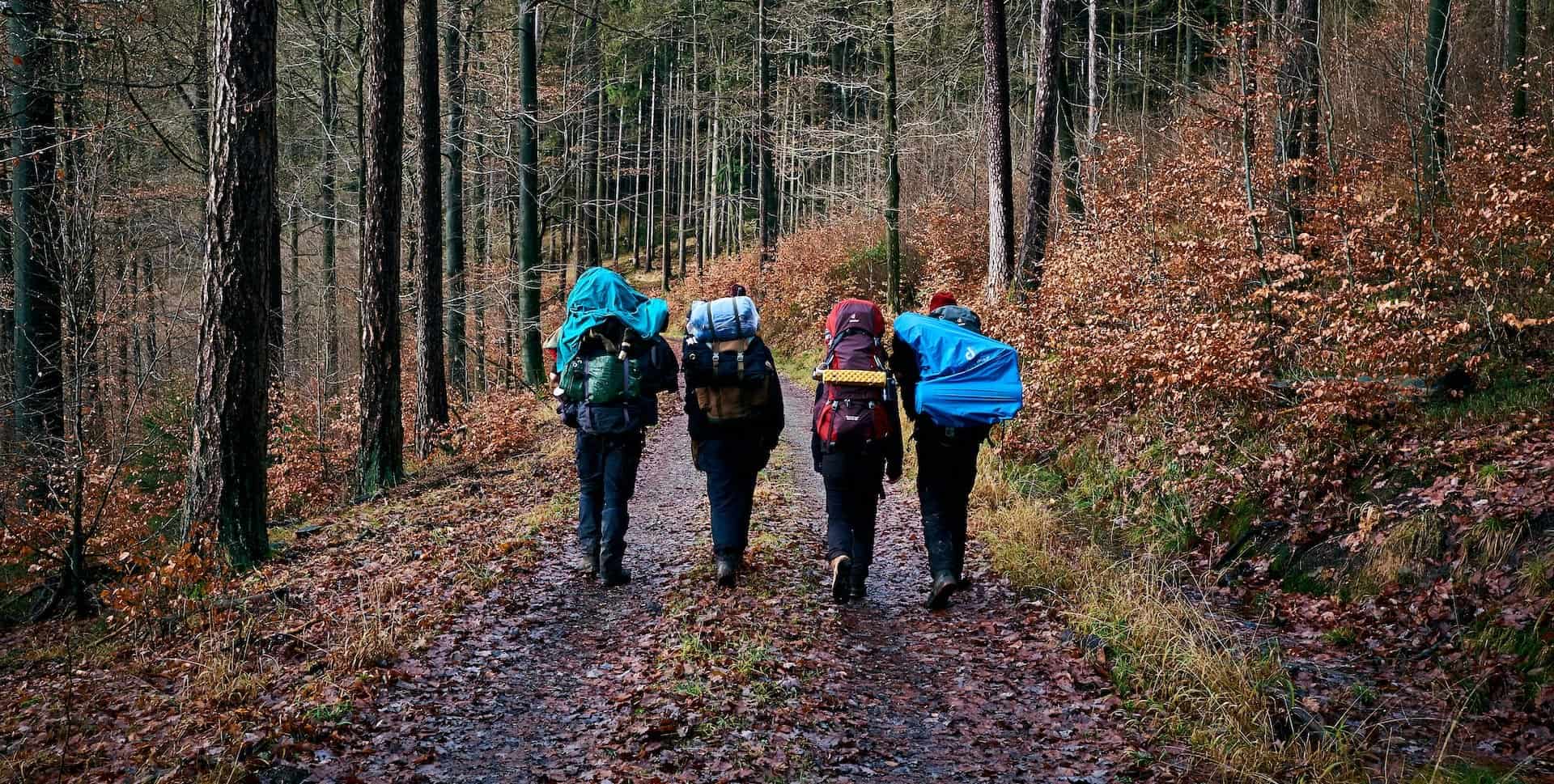The internet is full of advice on packing your backpack. But sometimes you have extra gear. For example, maybe you have a toddler or need an extra warm sleeping bag due to Raynaud’s syndrome. Whatever the reason, sometimes the sleeping bag won’t fit. So, what’s the best way to attach it?
How to attach a sleeping bag to a backpack in 11 steps:
- Put the sleeping bag in a waterproof bag
- Check if the backpack already has straps
- Attach the sleeping bag at the bottom of your backpack
- Attach the sleeping bag at the top of your backpack
- Attach the sleeping bag on the side of your backpack
- Attach the sleeping bag on the back of your backpack
- Attach the sleeping bag using compression straps
- Attach the sleeping bag using bungee cords
- Attach the sleeping bag using a bungee net
- Attach the sleeping bag using a belt
- Consider attaching the tent on the outside of your backpack
If you’re wondering how to attach sleeping bag to backpack – read on!

1. Put the sleeping bag in a waterproof bag
A wet sleeping bag is useless and dangerous on the trail. So before attaching your bag to the outside of your backpack, you need to have a waterproofing strategy.
The cheapest solution is using a heavy-duty black garbage bag. They work well so long as there isn’t a leaky seam or a hole. Unfortunately, these do have a high snag risk and are easily damaged. However, packing a spare or two is inexpensive and simple.
Dry bags are an effective and lightweight option for keeping your sleeping bag dry. A 20-liter will fit most sleeping bags and their liner. Some ultralight sleeping bags can fit into an 8-liter dry sack. However, a few larger sleeping bags will require a 35-liter dry sack.
Waterproof compression sacks are another excellent option. These typically cost more than a regular dry sack, but it will reduce the bulk, making it easier to carry. Even better, some compression sacks will reduce the bag enough to fit in your backpack.
2. Check if the backpack already has straps
Check your backpack and see what straps and loops it already has for attaching gear. The placement and type can impact how you attach it and wear it will best fit. If you have an external frame backpack, there are probably already tie points to secure your bag.
3. Attach your sleeping bag at the bottom of your backpack
Attaching the sleeping bag to the bottom of a backpack is a natural, comforting positioning. It cushions the gear on your bag and doesn’t (usually) restrict movement. After all, many backpacks put their sleeping bag compartment at the bottom for this exact reason.
Having your sleeping bag at the bottom of the backpack also shelters the bag from some debris, snags, and weather.
However, for certain people, attaching the bag at the bottom will lead to it pressing too low on the bum or thighs. While backpacks should be placed high enough for this not to be an issue, shorter humans have limited fit options and are often making do.
The other drawback of attaching the sleeping bag at the bottom is the risk of it getting wet or filthy when you remove the backpack. You also risk damaging the waterproof sack, especially if you have opted to use a garbage bag.
4. Attach the sleeping bag at the top of the backpack
Securing the sleeping bag to the top of your pack is a popular option. It allows you to take your bag on and off, and since it is relatively light, it doesn’t throw your balance off as it would, putting a slightly heavier load up high.
However, some people find it restricts their head, neck, and shoulder movements. Others find it harder to wear their sunhat. A few say it causes them to hunch. But the biggest complaint is that it will block the upper lid compartment, making it harder to reach essential gear, like the first-aid kit.

5. Attach the sleeping bag on the side of the backpack
Attaching sleeping bags to the side works best if there are compression straps. However, having it hang off the side creates a snagging hazard. Also, as it bounces around, it can throw off your balance or be hard on your body.
But some people can’t find a comfortable way to attach it to the bottom or top, so the sides are the only practical option. Unfortunately, it is also the only external attachment option for most parents lugging a toddler hiking carrier.
6. Attach the sleeping bag on the back of the backpack
Attaching a sleeping bag to the back of a backpack only works for some people. Some folks will be completely unbalanced by having it on the back and will have to hunch to have any hope of not falling backward. It really depends on the size and proportions of the person, the bag, and the pack.
Depending on how far the sleeping bag sticks out, it can also make squeezing through tighter areas nearly impossible. Also, don’t turn around fast near anyone you care about, as you might whack them.
But if the sleeping bag is compact and the person is taller, it is often no more difficult than carrying a toddler in a hiking carrier. In fact, with the proper setup, it can be pretty comfortable. The trick is to make it as flat and compressed against the bag as possible, so the weight isn’t hanging too far from the body.
7. Use compression straps
Compression straps can help attach a bag, keeping it tight and compact. These handy straps come with various release options, including a standard press buckle or the easy hook system. However, Velcro compression straps are not recommended, as they can easily be pulled open when snagged.
Many compression straps can be extended, which is helpful when the ones on your bag are too short. You just clip in your own straps, and it is long enough to go around your bag.
8. Use bungee cords
Bungee cords are another helpful tool for strapping your sleeping bag to your pack. There are kits that will help you strap all your gear. You can also buy bungee backpack hooks to add attachment points to your pack. Or just raid your parents’ or grandparents’ garage and use what they’ve got.
9. Use a bungee net
Bungee netting is the go-to for many hikers when they need to strap items outside their bag. For those that don’t like hooks, they replace them with small, lightweight carabiners. Bungee netting is easy to use and quick to take on and off.
10. Use a belt
My friend’s father had a crusty old leather belt that would not die. He used it to strap gear to the outside of his backpack and was also used as a bicycle seatbelt for toddlers in the kid’s seat. (Do not do the latter. It was the 80’s; they were boomers, still letting kids ride in the trunk of station wagons.)
So while using your old belt is a bad-awful-horrible seatbelt alternative, it works fine for attaching gear. The downside to the belt is the weight, as leather and a metal buckle tend to be heavier than bungee cords and compression straps.
Also, leather technically needs to be cared for, or it cracks. My friend’s father never got this memo, and while the leather didn’t look pretty, it is still kicking around one of his kid’s closets. Yes, the belt outlived the man despite the neglect. It’s like a fridge made in the 70s – ugly but made to last.
11. Consider attaching the tent on the outside of your bag instead
If you can’t fit all your gear inside your bag, consider swapping the tent for the sleeping bag. Ideally, everything fits inside. However, you can survive the night with a rain fly and a quality sleeping bag. Trying to survive the night without a sleeping bag is much harder. Also, your tent will probably dry faster than a wet bag.
Ideally, you want both, of course.

Can I Attach A Sleeping Bag To A Child Carrier Backpack?
What you can and should do are entirely different. It isn’t advisable to attach items on the outside of these carriers due to the balance and weight involved when hauling young humans and the gear. It also increases the chances of dangerous snagging or compromising the safety of getting the pack off.
However, it is technically possible to attach it to the sides of the child carrier. Some also have space between the storage compartment and the child’s seat to fit a compressed sleeping bag.
But you must never put one at the bottom, as it interferes with the kickstand. Nor should you put it in front of the child’s face (suffocation risk, neverminded annoying for the child).
Ideally, people trekking with a baby or a toddler need a buddy to help carry the gear. Some people even enlist their dogs, getting them harnesses with saddlebags. Chat to your vet about the appropriate amount of weight your dog can safely carry.
In addition, you can free up storage space in the child carrier by carrying a smaller backpack in the front. All those handy child items, from snacks to sunscreen, can be put there, leaving more space for a sleeping bag.
